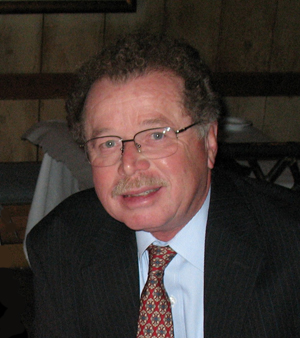Henry Binford's Great Run
 Henry Binford has witnessed many changes in the History Department he has served so long and so well. When he arrived in 1973, the department—then about half its current size—was a gentleman’s club whose core senior faculty’s formative shared experience was not grad school but fighting in World War II. Of the three women, two were assistant professors, who, like Henry, were relegated to dismal offices in pre-renovation Harris Hall’s dank basement. (The third, Dean of the College Hanna Gray, rarely set foot in the building.)
Henry Binford has witnessed many changes in the History Department he has served so long and so well. When he arrived in 1973, the department—then about half its current size—was a gentleman’s club whose core senior faculty’s formative shared experience was not grad school but fighting in World War II. Of the three women, two were assistant professors, who, like Henry, were relegated to dismal offices in pre-renovation Harris Hall’s dank basement. (The third, Dean of the College Hanna Gray, rarely set foot in the building.)
Henry himself has changed. As an undergraduate, he processed data on a mainframe for a study of the academic profession headed by famed sociologist Talcott Parsons. He’s convinced he was offered his job at NU because his knowledge of computers snowed his hopelessly analog colleagues. The methodological differences between his The First Suburbs: Residential Communities on the Boston Periphery his From Improvement to City Planning: Spatial Management in Cincinnati from the Early Republic through the Civil War Decade reflect his movement from the new social history to a more complex and textured social and cultural approach.
But what most distinguishes Henry is how little he has changed. All his scholarship embodies his abiding interest in what city life has meant to people in different times and places. He has always focused on the human stories within the creation of the urban built environment. And he has always been deeply committed to the department, as a member of dozens of essential committees. He has been director of both undergraduate and graduate studies, and a member of some thirty dissertation committees, ten as director.
He has always as well contributed exceptionally beyond the department, as teacher and director in American Studies and Urban Studies, director for almost thirty years of the Master of Arts in Liberal Studies Program (within which he supervised over forty theses), and African American Studies. He has been an active presence in Shepherd Residential College since 1974, including terms as faculty chair and associate faculty chair. In his final years at NU, he has participated in the reaffirmation and reconstruction of Black House. His judgment, dedication, integrity, wit, and kindness have benefited every effort of which he has been a part.
Most members of the Northwestern community past and present have known Henry Binford best as a great teacher. Few instructors match Henry’s ability to make the most complex subjects so clear. His students sense his broad and deep intelligence, his devotion to their learning, and his generosity of spirit toward them. He has earned virtually every award the university offers, up to the Charles Deering McCormick Professorship for Teaching Excellence.
Within the department his classes have encompassed everything from freshman seminars to his signature two-quarter course in the development of the modern city. Immediately upon arrival, he took over the second half of the American history survey, which quickly grew to four hundred students. In addition, he developed multiple innovative team-taught courses, mainly with Carl Smith, starting in the early 1980s with an NEH-sponsored class on humanistic dimensions of technological change. Kasey Evans (also of English) joined Binford and Smith to create “Brave New Worlds,” a sweeping interdisciplinary consideration of ideal societies from More to Huxley and beyond, which was the initial curricular offering of the Kaplan Humanities Scholars Program for Freshmen in 2007.
No discussion of Henry’s teaching is complete without mention of the dozens of historically themed field trips to countless sites in Chicago and beyond he has conducted over the years, by bus, El train, and on foot. Armed with a bullhorn or microphone, sheafs of hand-drawn maps, encyclopedic knowledge, and indefatigable energy, he has introduced so many fortunate companions to the abiding presence of the past.
